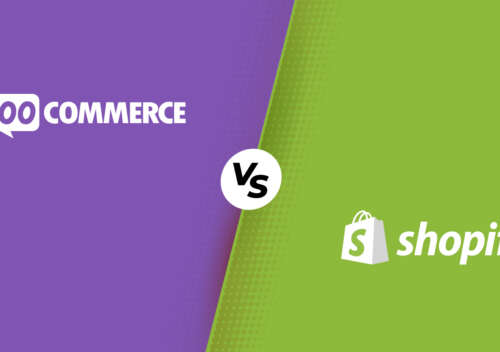here is an article that details Software Deployment vs Release difference. Have a look at the write-up to know more.
Software Deployment vs Release: Pointing Out Key Differences
Software development services require a significant amount of effort, but all that hard work only pays off when customers use the product. They also expect to gain value from it, and achieve their desired results. Whether it’s an app or a website, it needs to operate smoothly and seamlessly. Regular updates, often in the hundreds or thousands, are released for apps and software. These updates enhance performance, bolster security, and fix bugs while also delivering the latest features. The goal is to provide users with a flawless, enjoyable experience. This consistency in performance and reliability is why people embrace these tools for their daily activities. Recent statistics from Business of Apps reveal that the Apple Store has seen 32.6 billion downloads, while Google Play boasts 110.1 billion downloads. The sheer popularity of apps is astonishing! Software development services encompasses a number of processes wherein software deployment and release are two important ones. This article is going to focus majorly on software deployment Vs release.
That being said, the development of software or apps always carries high stakes. Success is never guaranteed. Even when the software is developed with complete efficiency, things can go wrong once it’s released. Bugs, loopholes, or even outages can emerge, negatively affecting clients and leading to wasted time, money, resources, and stunted business growth.
But why does this happen?
The answer lies in a poorly managed release and deployment process. A chaotic or inefficient release can wreak havoc. This is why having a well-structured release management process is vital in any software development plan. It’s important to note that software deployment is just one component of the release management process. Equally critical are planning, designing, coordinating, and thoroughly testing the software before it’s deployed into a live environment. Effective release management ensures a smooth transition and reduces the chances of disruptions.
What is Deployment in Software Engineering?
Software deployment refers to the process of releasing an app, software system, or update by moving it through various environments until it reaches the end users, who trigger its deployment. This process encompasses all necessary steps, tasks, and actions required to make a software solution or update available to its intended audience. Timely and consistent software deployments are key to scaling businesses and maintaining security. Regular updates allow companies to meet evolving customer needs and adapt to shifting business requirements. Developers often utilize continuous integration and continuous delivery (CI/CD) pipelines to streamline and optimize this process.
As a critical phase in the software development life cycle (SDLC), software deployment enables developers to deliver high-quality software solutions while minimizing resource use—both financial and human. The deployment process is composed of various interrelated activities that occur across multiple stages. Given that each software solution is unique, it’s challenging to apply a one-size-fits-all approach to deployment, making it essential to tailor the process to meet the specific requirements and characteristics of the software being deployed.
The software deployment process includes several key stages, such as release, installation, testing, deployment, and monitoring. These steps ensure that each new feature or update is thoroughly tested and implemented safely, allowing developers to monitor and manage the software effectively. This structured approach guarantees that updates are deployed securely and smoothly, ensuring a stable and reliable user experience.
What is Software Release?
A software release refers to the launch or publication of a new or updated version of an application or software that aligns with customer needs, user experience, and overall business goals. These releases can be either public or private, depending on the intended audience.
The software release process takes place after the deployment phase gets over. It’s also an essential part of the software development life cycle (SDLC), where deployment serves as a key component of the broader release management process. When preparing for a software release, several critical steps needs consideration, such as setting up the software system for integration and ensuring it is properly ready to go to the production environments.
Additionally, it’s important to assess the system’s resource requirements to ensure smooth operation, while carefully planning and documenting the later stages of implementation. In summary, the release happens after the deployment as part of the release management workflow. It requires clear planning, design, coordination, and testing of the software version before it goes live. Why is this necessary? Because managing different versions of software can be intricate, and a structured approach is essential to ensure smooth and successful releases.
What are Different Deployment Techniques?
The methodologies of these processes are both different and that’s how the points of differences are there. Here is a brief on these pointers.
DevOps
DevOps is the practice of blending cultural philosophies, tools, and methodologies to boost an organization’s ability to deliver applications and services at a faster pace. It enhances collaboration between development and operations teams, leading to more efficient and streamlined processes. To further optimize the deployment process, various DevOps toolchains are available in the market, offering automation and improved workflows.
Blue-Green Deployment
It is one such technique that is in practice to reduce risks and minimize downtime during software updates. It involves running two identical production environments: one (blue) that is currently live and another (green) where new updates are ready to go. Once the updates get go ahead after testing and verification, traffic then goes from the blue environment to the green, ensuring a seamless transition.
CI/CD (Continuous Integration/Continuous Delivery)
It is an approach that automates key stages of the software development process to ensure regular and reliable delivery of applications to customers. The creation of CI/CD on three main concepts: continuous integration (CI), continuous delivery (CD), and continuous deployment. To achieve a smooth CI/CD release management process, there are numerous tools available that automate these phases, enabling faster and more consistent app releases.
A Brief on Different Release Techniques
In release lifecycle management, the strategies employed for software release are distinct from those used in software deployment. Let’s explore the key release methodologies:
Big Bang Releases
In this approach, the team works on a software project over an extended period, sometimes months, and launches the entire product in one major event. All features, updates, and functionalities then are ready to release simultaneously in a large-scale rollout.
Canary Deployment
Also known as canary release, this method allows developers to deploy new code or features to a small subset of users first. This group serves as early testers, helping to identify potential issues before the release. It’s a smart way to catch problems early without affecting all users.
Dark Launching
Similar to canary releases, dark launching involves introducing new features to a very small, unaware segment of users. These users have access to new functionalities without realizing it, allowing the development team to monitor performance and user interactions without creating any bias or expectations.
Points of Difference Between Software Deployment Vs Release
People often confuse software deployment Vs release, using the terms interchangeably. Here’s a breakdown to make the difference between deployment and release clearer:
Software Deployment refers to the process of moving software from development into the production environment, whereas Software Release means making the software available for end users.
Deployment can happen multiple times throughout development, while Release takes place only after the software has been successfully deployement and testing comes as a success.
– The difference between deployment and release also lies in their focus:
Deployment is a technical process that deals with servers and infrastructure, while Release is a business process that involves user communication and marketing.
Deployment concentrates on setting up the environment and infrastructure, while Release focuses on making features accessible and ensuring user readiness.
Deployment tools include Jenkins, Ansible, and Docker, whereas Release tools involve platforms like Jira and GitHub releases.
Key distinctions:
Release:
A collection of modifications delivered in production; visible to end users.
Deployment
The movement of code between controlled environments; is easy to execute in multiple target environments.
Releases
These are frequent and reflect new features or updates visible to users.
Deployment
It is the final phase of software development, often running across different domains.
Releases
It exposes users to potential bugs or vulnerabilities, as they involve the end product.
Deployments
The Process has lower risk since they happen in controlled environments, minimizing the chance of errors.
Software deployment and software release are the two most important process in software development services. These process are equally important and therefore the services needs to come from a trusted service provider.












